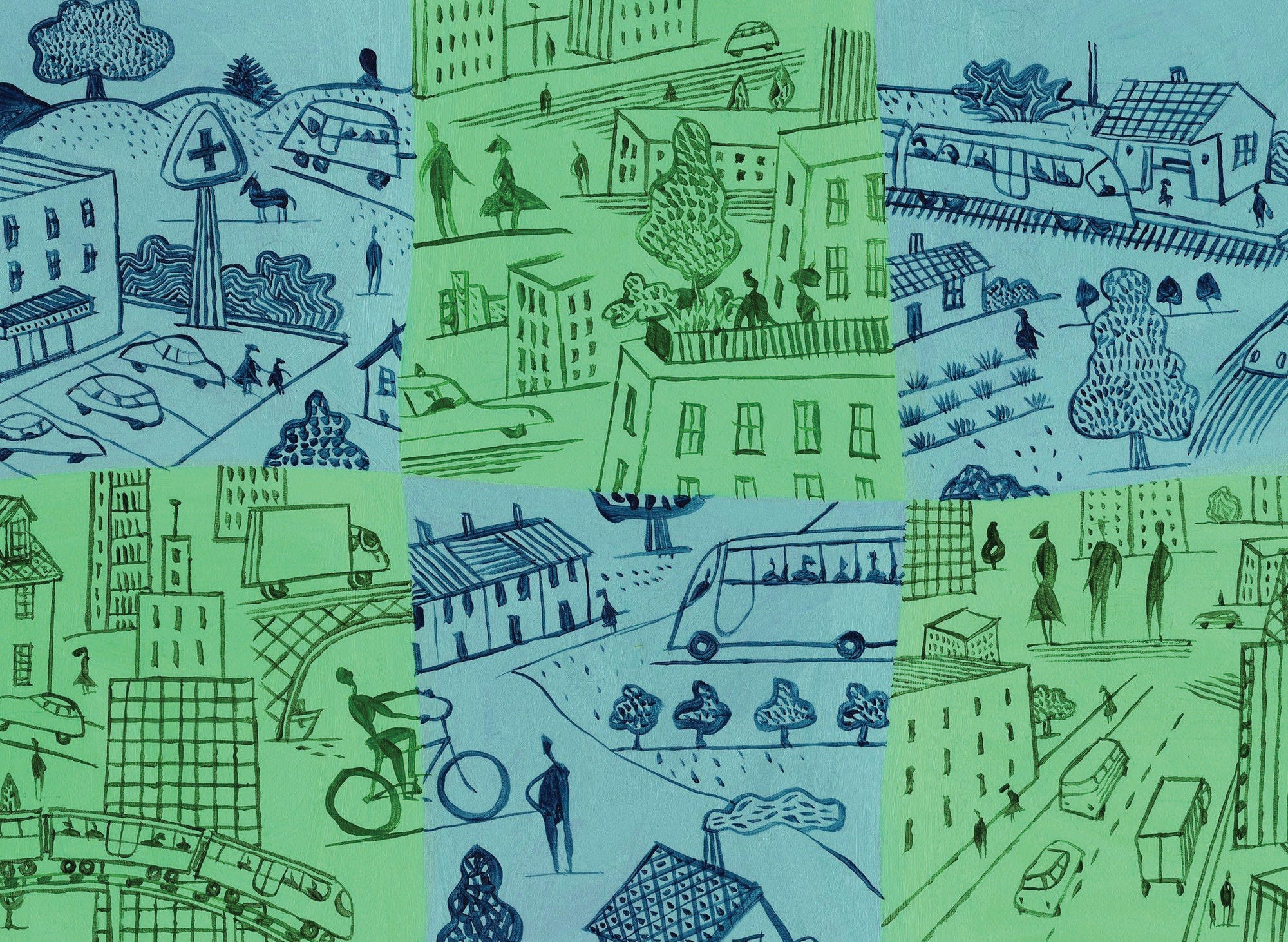In OECD countries, cities and their respective commuting zones have three and a half times more buildings and infrastructure per capita than in the rest of the world.
In cities and their commuting zones (i.e. FUAs) of OECD countries, around 280 m2 of land per person are built-up, 3.5 times more than the average in the rest of the world. While housing and infrastructure for public services are crucial for well‑being, extensive artificial surface cover can have major environmental impacts, such as diminishing biodiversity and deteriorating soil quality (Haščič and Mackie, 2018). In addition, low-density housing and urban sprawl can be associated with higher energy demand and transport-related CO2 emissions (OECD, 2018). The extent to which built‑up land in cities changes with respect to population is an indicator included in the UN Sustainable Development Goals to promote efficient land use and prevent urban sprawl. In this respect, FUAs in OECD countries differ remarkably from those in the rest of the world, with much higher average values, reflecting relatively high levels of infrastructure provision and road network (Figure 3.21, panel A).
In many OECD countries, the change in built-up area per capita in FUAs during the last 15 years has been high despite already high initial levels of the built environment. For example, in 160 out of 428 (37%) FUAs with high levels of built‑up area per capita in 2000 (above 300 m2 per person), land consumption has increased at a higher rate than the population. On the other hand, in 40 out of 143 FUAs with initial low levels of built-up area per capita in 2000 (below the 100 m2 per person), the population is growing faster than the built-up area, which can intensify pressure on relatively limited infrastructure networks and undermine the provision of basic services to a growing population (Figure 3.23-Figure 3.24).
The amount of land dedicated to buildings and infrastructure has been increasing at different speeds depending on city size, with faster increases in the small- and medium-sized cities. Built‑up areas per capita in FUAs with less than half a million inhabitants have increased by 15.6 m2 per person since 2000, while it has increased by only 1.2 m2 per person in those above half a million inhabitants during the same period. This trend is leading to a convergence in built-up area per capita across FUAs of different sizes in OECD countries – to an average close to 280 m2 per inhabitant (Figure 3.21, panel B).
Efficient public transport systems can make cities not only more sustainable but also more productive. Good transport networks improve people’s accessibility to existing services and amenities. They also minimise the commuting time of workers to their place of work and maximise the number of jobs (firms) reachable to workers, which can contribute to higher productivity (OECD, 2020b). European metropolitan areas display a positive and significant correlation between the performance of the public transport network (see Definition) and labour productivity (gross value added [GVA] per worker). Such a correlation does not hold between the performance of the road network and labour productivity. While metropolitan areas with the best public transport performance in Europe, such as Helsinki, London and Oslo, display the highest levels of labour productivity, the metropolitan areas of Athens, Nottingham and West Midlands report a low public transport performance and have the lowest labour productivity. On average, the labour productivity gap between the top and bottom metropolitan areas in terms of public transport performance in Europe is close to USD 28 000 per worker (in 2015 PPP) (Figure 3.22).




